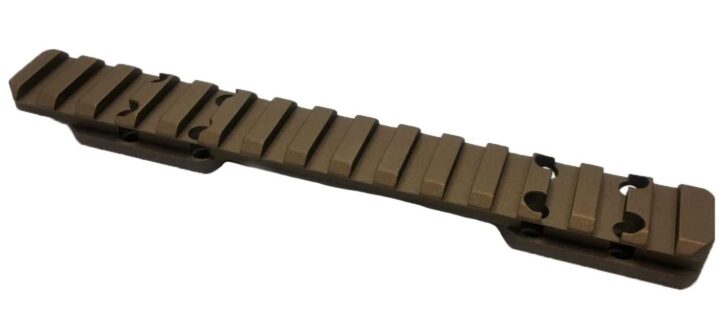The scope requires a rail to be mounted on a gun, and there are several different varieties available. A good scope mount system is very important especially because improper mounting can affect the accuracy of a rifle scope.
If you are looking to invest in a good rifle scope you might as well look into getting the best mounting system out there.
Types of Rifle Scope Mount
We have different types of mounts available; the one-piece, two-piece and the cantilever mount. We will go over each type and then look at the many rail alternatives available to support these mounts.
One-piece mount
This is one of the most popular and basic types of mounts. It comprises two rings attached to a single base that fixes on the rail. One of the main reasons for its popularity is that it is simple to install and doesn’t need the alignment of the two rings. This type of mount, however, adds a little bit of extra amount of weight to the rifle, and this may be a disadvantage for some shooters
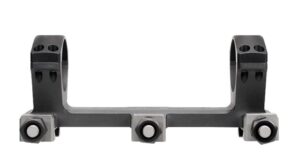
Two-piece mount
This mounting comprises two rings that have to be installed parallel to each other on the rail. One of the biggest advantages of this type of mount is that it gives the shooter the flexibility to adjust the distance between the two rings to adjust for different sizes of rifle scopes. The other advantage is that it doesn’t add a significant amount of extra weight to the rifle.
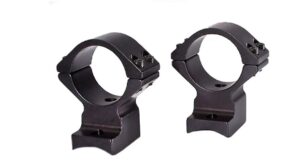
Now both the two-piece and one-piece mounts come with different configurations and heights to accommodate different preferences
Cantilever Mount
This is a derivative of the one-piece mount but the forward-facing ring extends further forward from the rifle’s receiver for increased eye relief and better ergonomics while shooting. This positioning also creates extra space on the rail to attach additional accessories.
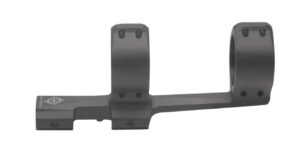
Type of Rail on a Gun
Now that you’ve learned about the several types of mounts available, you should understand how they attach to the rifle, which is done using a rail system. We have three types of rails to help you put the scope on the gun.
Picatinny Rail
Also known as the MIL-STD-1913 rail, it is one of the oldest and most common rails for attaching scopes to rifles. It features standardized slots across the width of the rail at consistent intervals

Most mounts are standardized to fit on this rail, and even the US military has accessories intended for the Picatinny. The Picatinny has a standardized design, slot sizes, and dimensions. It is modular in design, allowing it to easily integrate attachments built for various mounting methods.
Pros
- Modular standardized design allows it to be adapted to various accessories
- Easy to install accessories without specialized tools
Cons
- Some users term them as bulky, especially compared to newer mounting systems like M-LOK
Weaver Rail

This rail is quite similar to the Picatinny In design, however, the spacing between the slots isn’t consistent along the rail and the slots are usually slightly shallow and narrow compared to those on the Picatinny. Because the spacing and length of the rail aren’t standardized this rail can be available in two pieces referred to as weaver base.
Pros
- Weaver bases are light in weight
- An accessory made for the weaver rail can fit on the Picatinny
Cons
- Compatible with fewer accessories compared to the Picatinny
- Not standardized
Dovetail rail
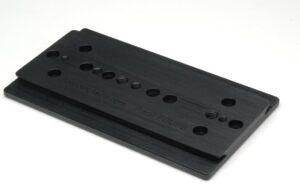
These are the most basic in design and are mostly used on guns with lower caliber and moderate recoil. The place where the mount attaches to is designed like an inverted trapezoid. To install a mount, one just slides it, from any direction, along the grooves on the side of the rail.
The dovetail rail is quite common and versatile because there exist adapters that transform it into either the weaver or Picatinny rail. It is also standardized, with the same dimensions across all manufacturers.
Pros
- Easiest to install a mount
- Versatile and can be transformed into any type of rail
Cons
- Except in a few cases, it is advised only for firearms with mild recoil.
Conclusion
It’s very easy to identify which gun scope rail is suitable for your needs after going through the differences. All accessories such as hunting lights, rifle scopes, and red dots are adapted to either one or the other type of mount and rail so this should be a consideration when buying. Lastly, use the correct tools to properly attach the mounts as well as the rail for effective accurate shooting.
Related

